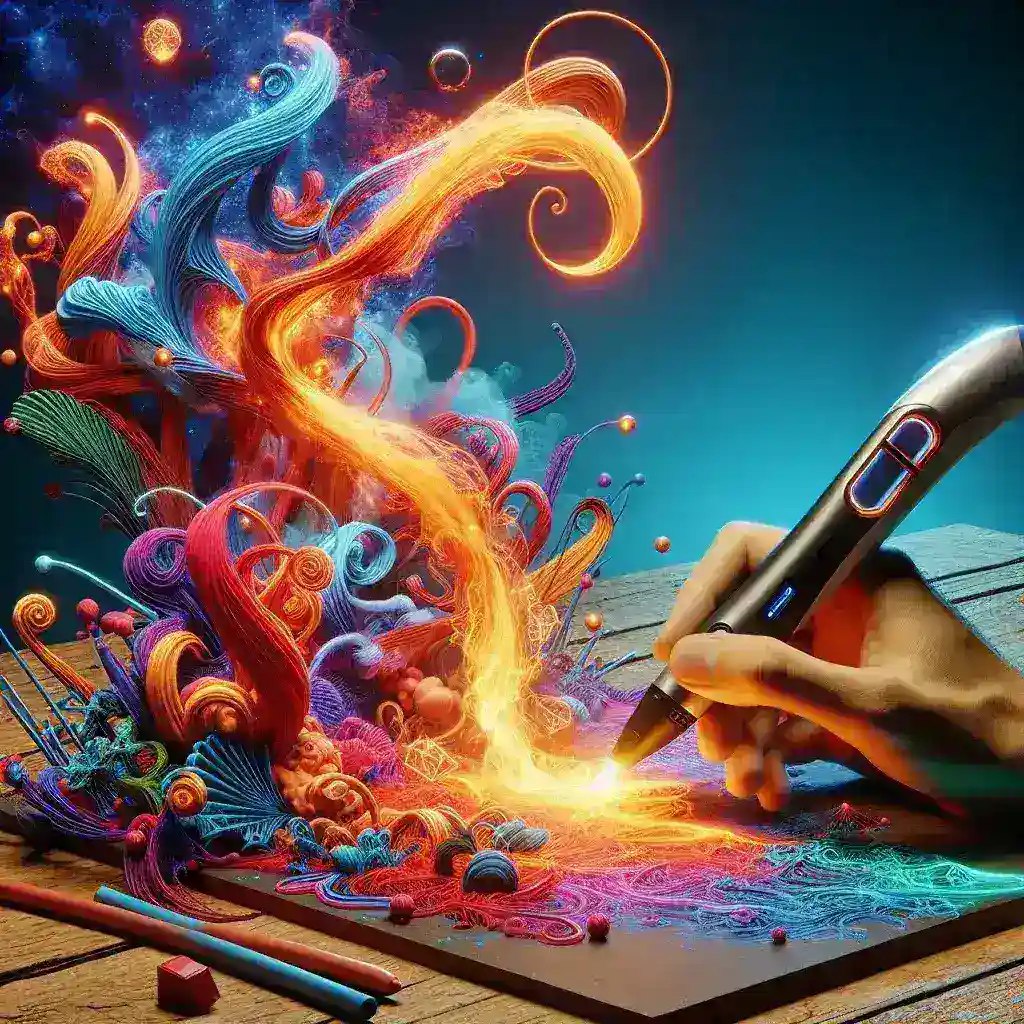Introduction
Abstract art is a creative form of expression where the artist uses shape, color, form, and line to create compositions that do not necessarily represent reality. One innovative tool to create abstract art is the 3D pen. This article delves into how you can create stunning abstract art using a 3D pen, from the techniques required to the materials you will need.
Materials and Tools Needed
| Material/Tool | Description |
|---|---|
| 3D Pen | A handheld device that uses heated plastic filament to draw in 3 dimensions. |
| Filament | The plastic material that gets loaded into the 3D pen. Available in different colors and types. |
| Stencil/Template | A guide to help shape your artwork. |
| Work Surface | A flat, heat-resistant mat to protect your workspace. |
| Protective Gear | Safety glasses and gloves to protect against burns. |
Getting Started
Before diving into your abstract art project, ensure you have all your materials ready. Here is a step-by-step guide on how to get started with your 3D pen:
1. Set Up Your Workspace
Choose a flat, stable, and heat-resistant surface. Prepare your 3D pen according to its instruction manual and ensure you have enough filament for your project.
2. Choose Your Filament
Select the filament colors that will bring your abstract art to life. Experimenting with different types of filament (PLA, ABS, or specialty filaments like glow-in-the-dark) can yield diverse textures and effects.
3. Create a Stencil
If you are new to 3D pens, you may find it helpful to create a stencil or use pre-made templates as a guide. This will help you focus on the technique without getting overwhelmed by the freehand drawing.
Techniques for Creating Abstract Art with a 3D Pen
1. Freehand Drawing
One of the simplest methods is to start drawing directly onto your work surface. Here are some tips:
- Choose a Starting Point: Begin with a simple design or shape and gradually build upon it.
- Layering: Add multiple layers to create depth and texture.
- Flow and Movement: Try to create fluid, continuous lines to capture the rhythmic qualities often found in abstract art.
2. Building Upwards
While drawing on a flat surface can yield beautiful results, using a 3D pen’s capability to build upwards opens up new possibilities:
- Skeleton Structures: Create basic skeletons for your work to form a sturdy base.
- Infill Techniques: Use zig-zag or lattice techniques to fill in spaces, adding complexity.
- Supports and Armature: These can help sustain larger structures and prevent collapse.
Advanced Techniques
1. Mixing Materials
Incorporate other materials like beads, wire, or even fabric into your artwork to add varied textures and dimensions.
2. Layering Colors
Switch filament colors mid-flow to achieve color blending and gradient effects. Use contrasting colors to highlight different sections.
3. Smudging and Fading
Though typically used with traditional mediums, techniques like smudging can be mimicked by sanding down sections of your 3D art to create smooth transitions between colors or shapes.
Tips and Best Practices
- Practice: Spend some time getting comfortable with the 3D pen before starting big projects.
- Patience: Rushing the art can lead to mistakes. Allow each layer to cool and set before adding more.
- Experiment: Don’t be afraid to try different techniques or filament types until you find what works best for you.
- Keep It Clean: Ensure the tip of your 3D pen is clean to avoid filament clogs.
Conclusion
Creating abstract art with a 3D pen opens up a world of creativity and innovation. By following the steps and techniques outlined above, you can create unique and mesmerizing pieces of art that transcend traditional boundaries. Always remember to practice, be patient, and most importantly, have fun with the process!

